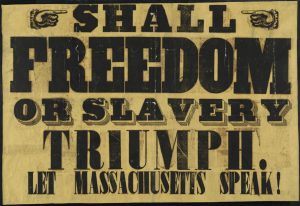Crowdsourcing Effort to Conserve Anti-Slavery Correspondence
 Massachusetts’s Boston Public Library has launched a fascinating project that is calling on the crowd for help.
Massachusetts’s Boston Public Library has launched a fascinating project that is calling on the crowd for help.
The library’s new website features a raft of handwritten letters from the US abolitionist movement spanning 50 years, and it’s asking volunteers to transcribe them one line at a time.
The large body of correspondence records the interactions between leading members of the anti-slavery movement giving us a front row seat to pivotal moments in US history.
Once users sign up there is a list of easy-to-follow instructions on how to transcribe the words of these anti-slavery activists, and then you’re good to go.
Participants are asked to type the words exactly as the author wrote them, even if there are spelling and grammatical mistakes.
Each line of a letter needs three transcribers to work on it before it is considered finished.
Project Goal
The principal goal of the project is to create a repository of machine-readable text from the letters. This means they will be easily searchable and more accessible. Software programs are just not up to the task of converting handwriting into characters that a computer can understand.
Anti-Slavery Collection

The letters form part of the library’s Anti-Slavery collection which lays claim to being one of the most important collections of abolitionist material in the United States. In addition to letters, it contains pamphlets, booklets, memorabilia and newspapers. Among the many highlights are every copy of The Liberator, an abolitionist newspaper that was edited and published by William Lloyd Garrison and ran continuously from 1831 to 1866.
To find out more about the crowdsourcing project and to take part, click here.
Reader Comments
It seems to me that a simpler and faster approach would be to do audio transcription. That is, a reader would read the letter and a Dragon-type software would transcribe it. These have become 95+% error free, which seems consistent with the margin of error for the exercise. The reader could then double check the transcription for accuracy making it virtually error-free.
Posted by Michael Fruhling on February 7, 2018
Add your Comment
[LOGIN FIRST] if you're already a member.fields are required.
